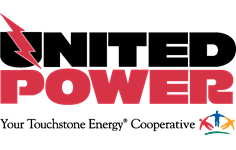United Power’s new rate structure went into effect on January 1st, and members will begin to see the 2019 rates reflected as separate demand and energy charges on their February bills. While energy is the total power used, demand refers to the capacity needed to serve your location. The new rates break apart the costs for demand and energy to more fairly charge each member for their impact on the electric system and the energy they use.
Why did you change to this rate structure?
The way our members use power has changed, and we now have more detailed information about how each member uses that power. On the blended rate, some members were paying more than they should, while others were not paying enough. The demand component allows us to more fairly charge each member in a way that is more closely aligned with our costs to provide that service.
How do I see when I hit my demand?
Demand measures the highest 15-minute interval of power consumption over the billing period and your bill will show you the kilowatt (kW) demand measurement of that highest interval. If you’d like to investigate what contributed to your demand charge, the Power Portal will show you the day and time that your demand peaked. Pinpointing the day and time will give you the information to reflect on how you were using energy.
Perhaps your demand was highest on a cold Saturday afternoon when you had soup on the stove, bread in the oven, the kids were downstairs gaming with a space heater on, and it was marathon laundry and cleaning day for the family. Operating all of these appliances at once required more system capacity for United Power to serve you, and your demand charge for the month is a fairer representation of how you used the electric system.
How can I reduce my demand?
Monitoring your use in the Power Portal will help you understand what is driving your demand. You’ll see the effect of using multiple appliances at once and what your energy profile looks like when you stagger appliances. If you’d like to keep your demand charges as low as possible, small changes in the way you use energy can make a difference. Here are some easy ways to reduce your demand:
- Spread out the use of major appliances. Major electrical appliances that may contribute to high demand costs include air conditioners, electric clothes dryers, electric water heaters, electric ranges and ovens.
- Use small cooking appliances or an outdoor grill.
- Use a programmable or smart thermostat to pre-heat or pre-cool your home before you get home and operate kitchen appliances.
- Use a timer on your water heater, dishwasher and pool pump.
- Set a timer on your electric vehicle charger for the middle of the night after other major appliances are not in use.

